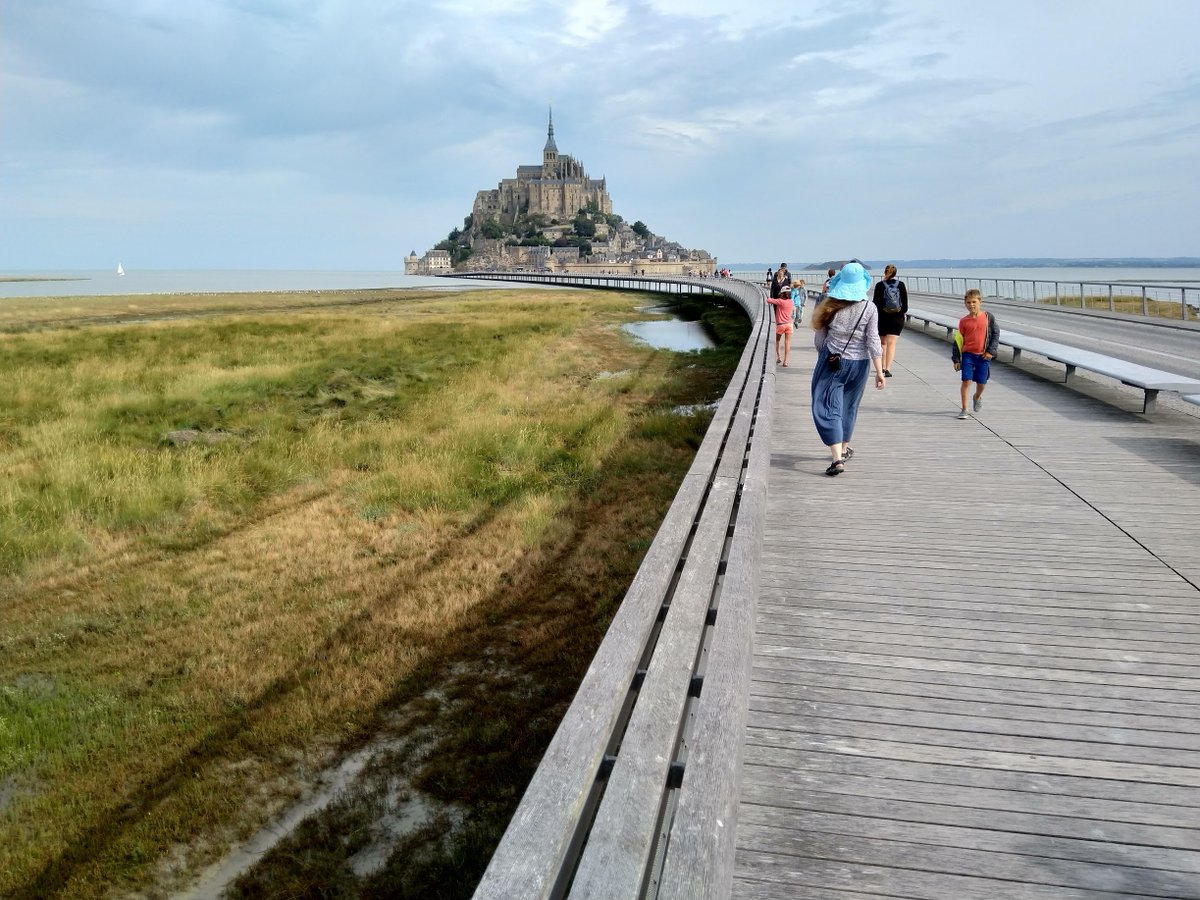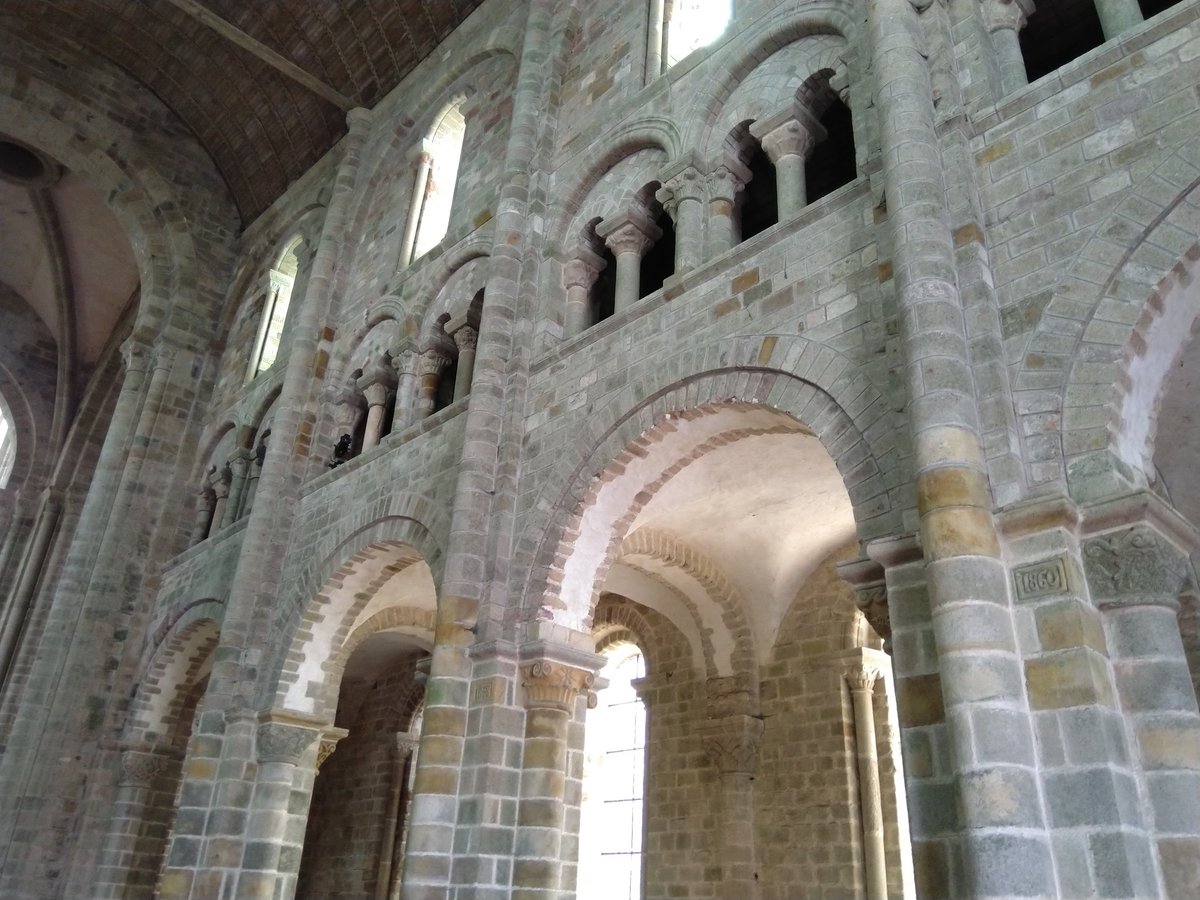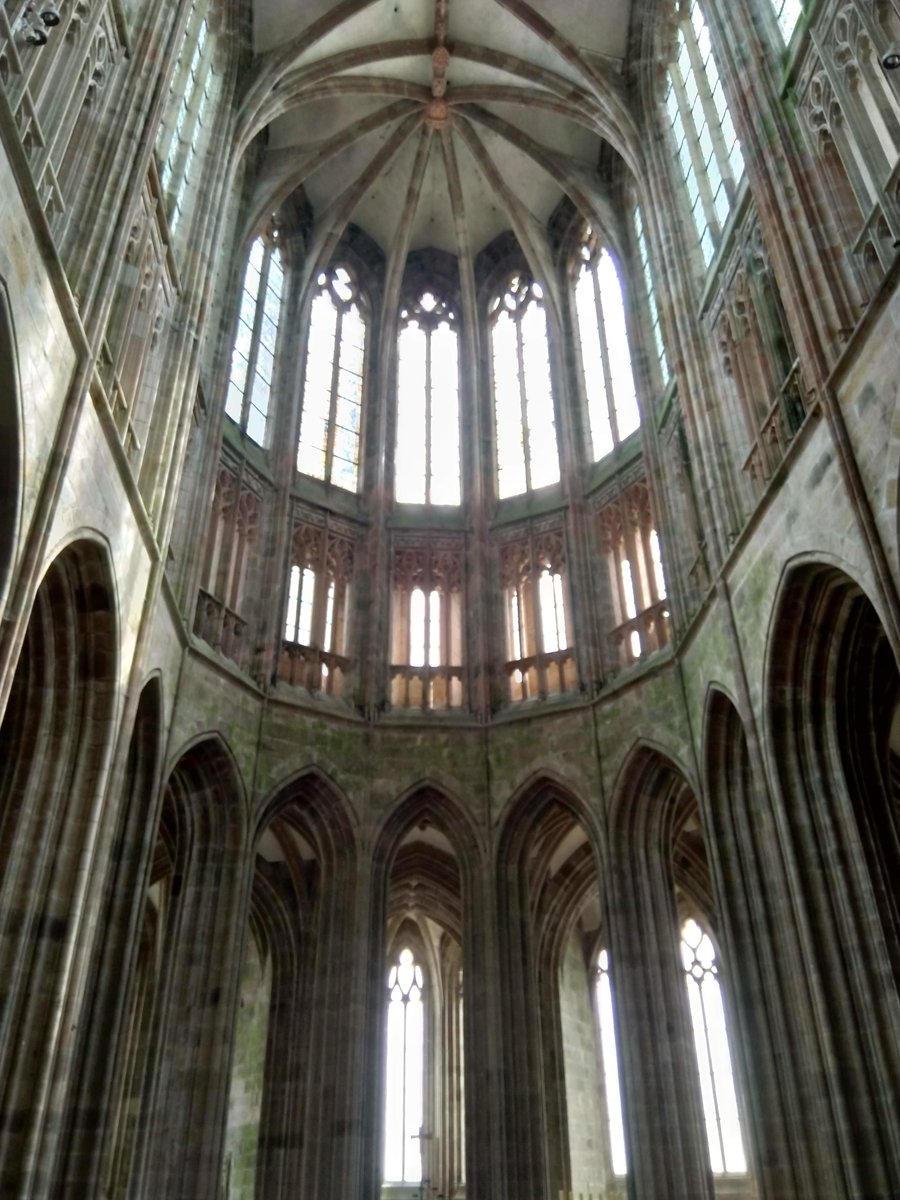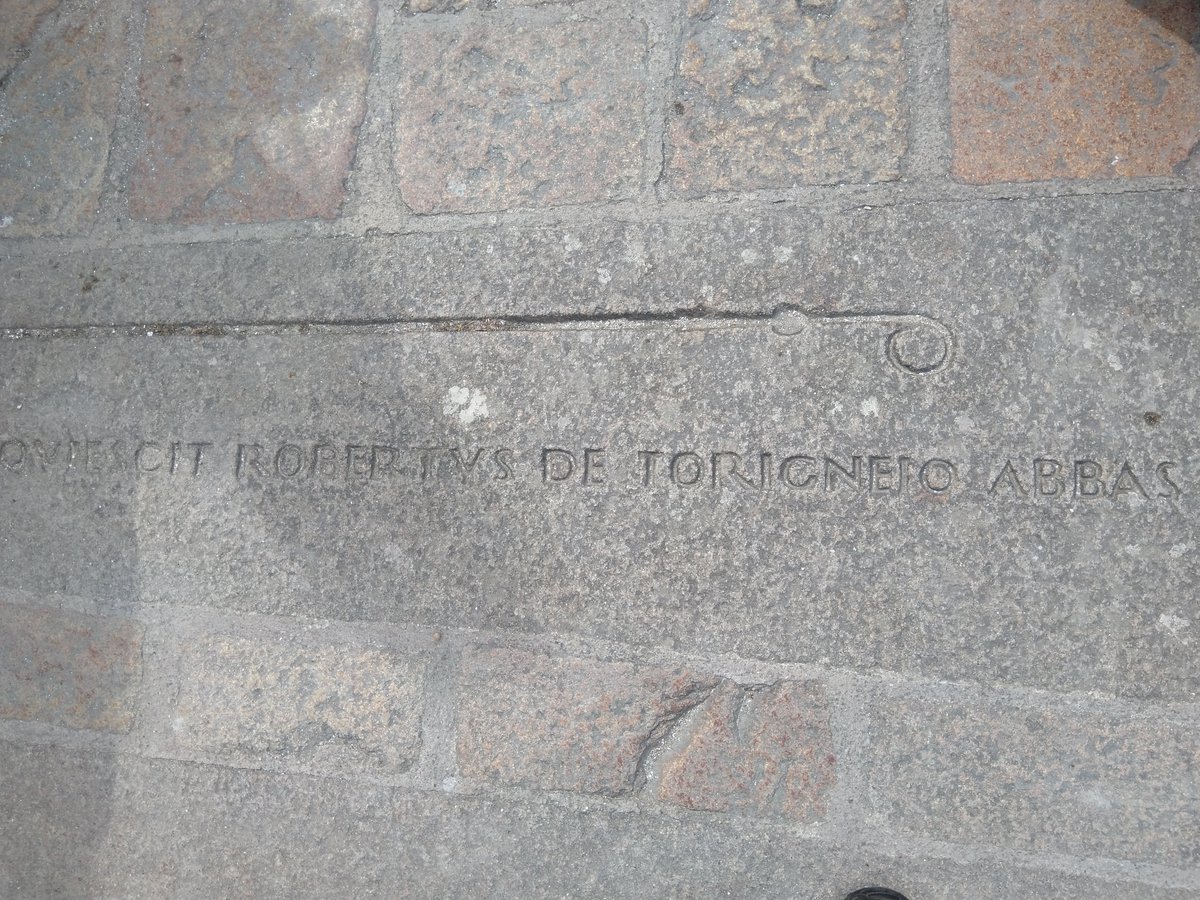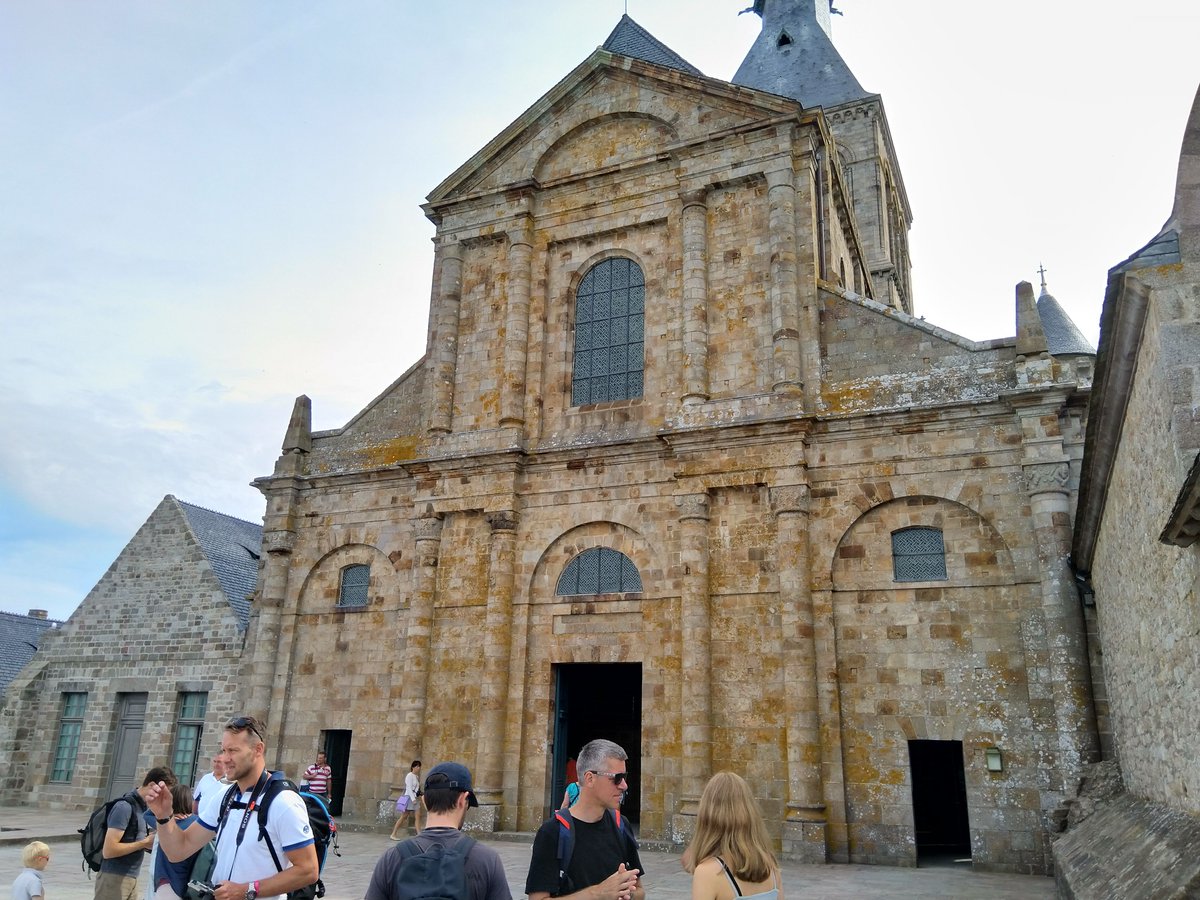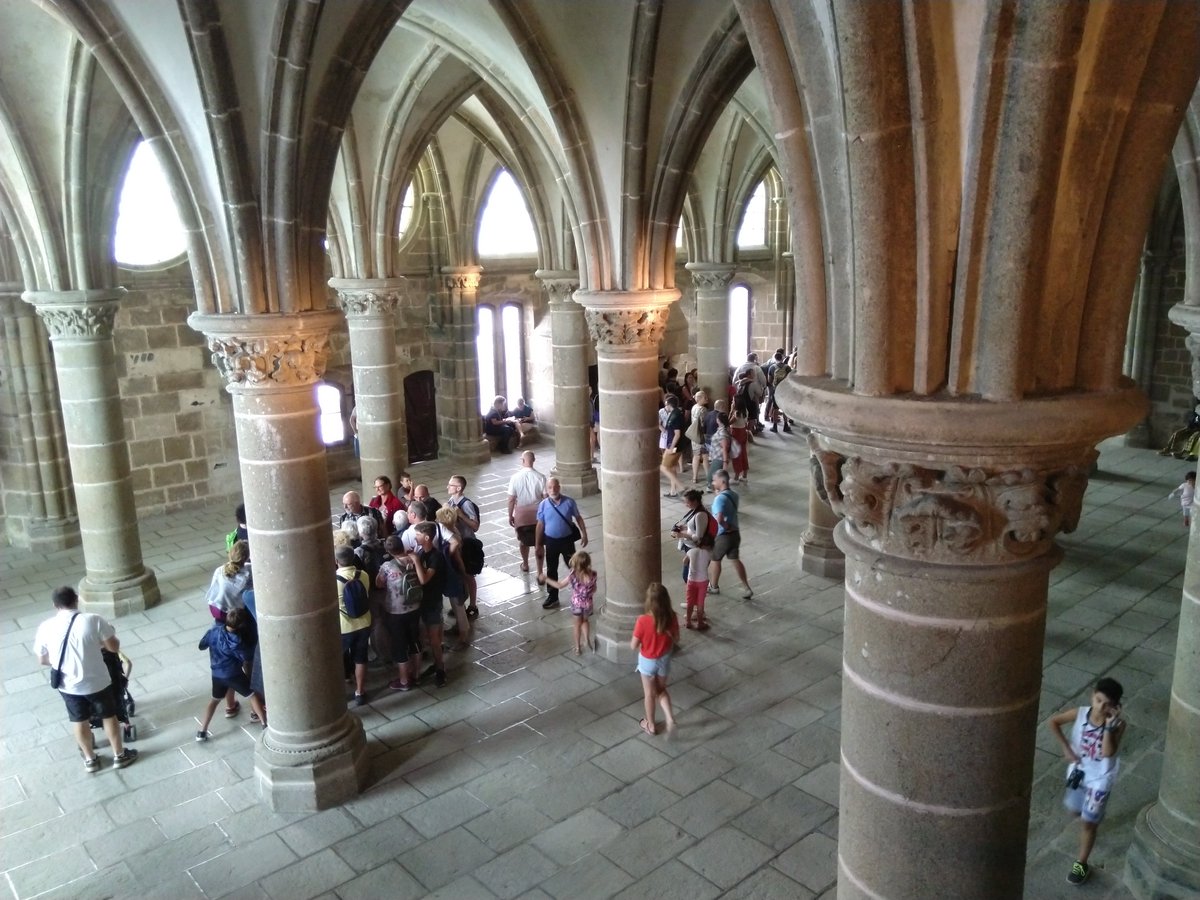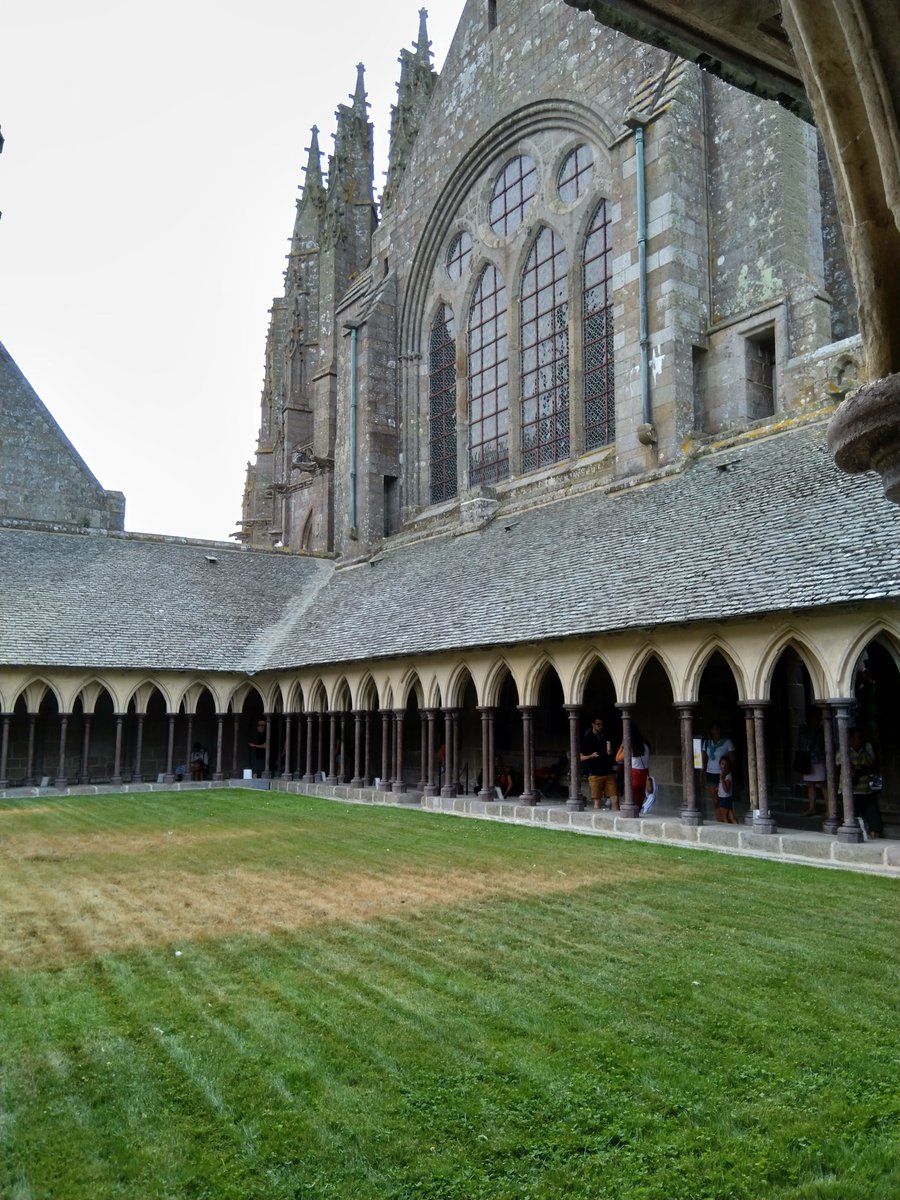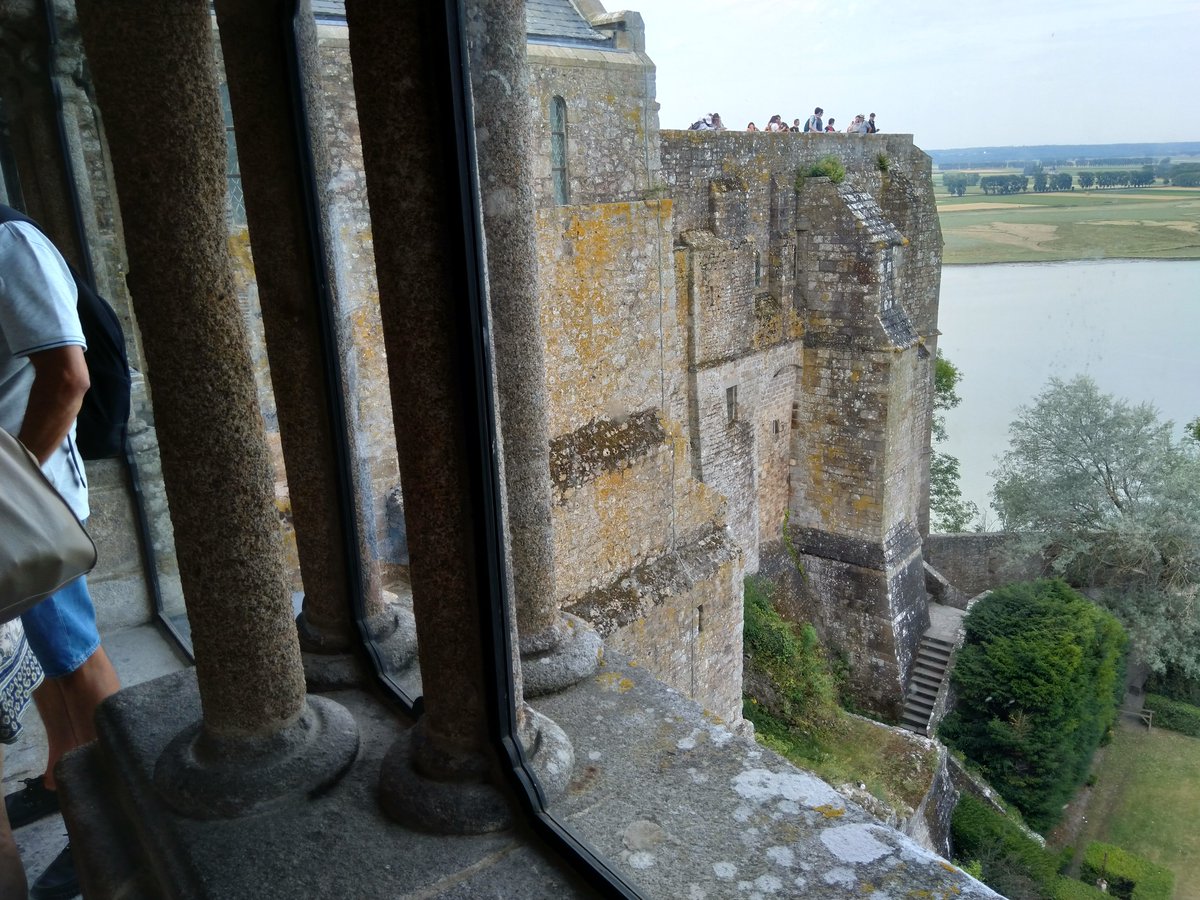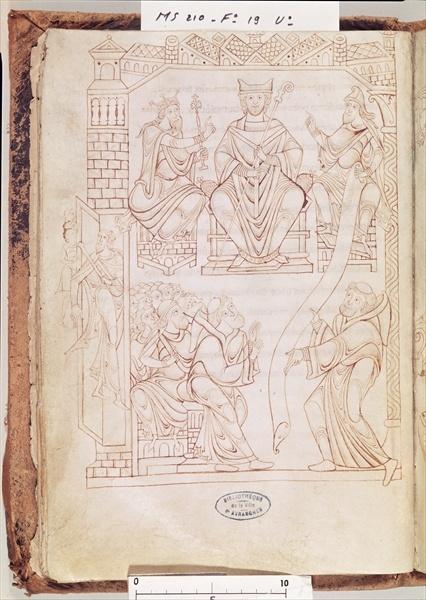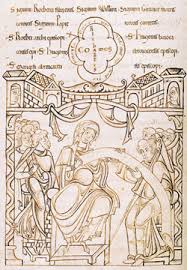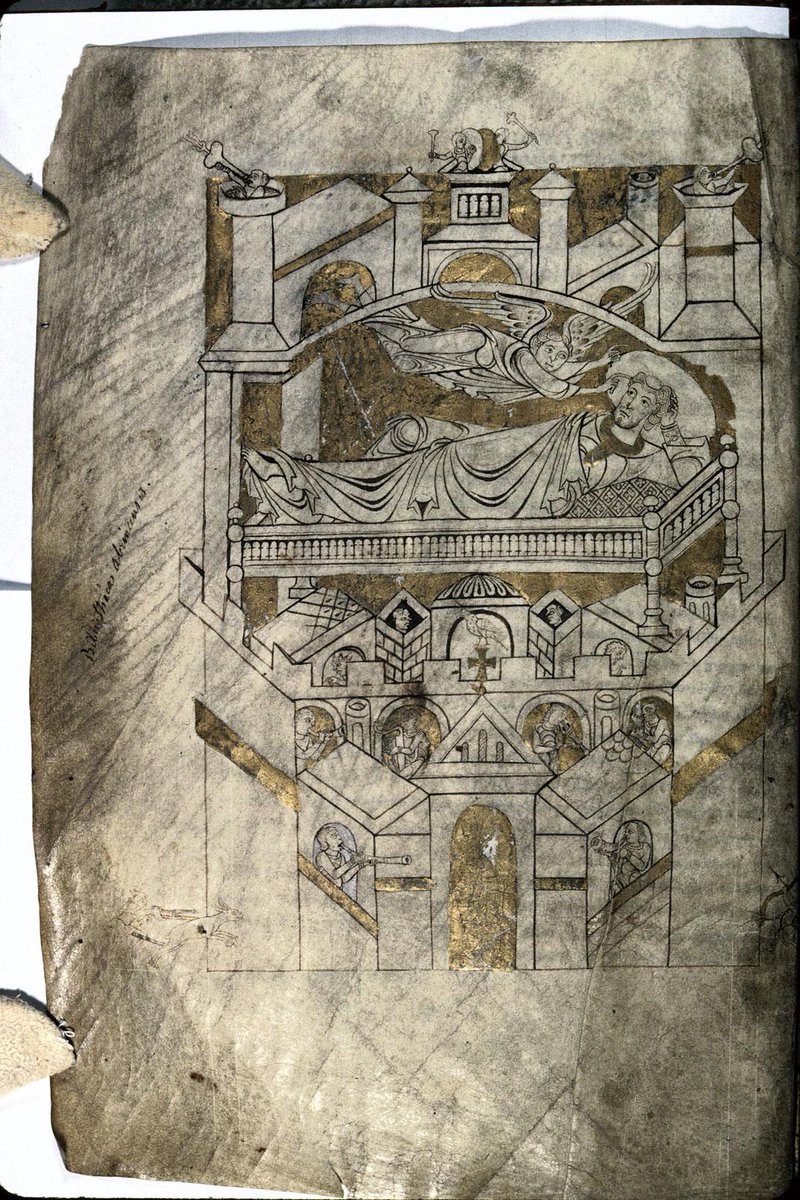The first in a series of threads about aspects of #Norman #MedievalHistory: Mont-Saint-Michel (suggested by @AnotherAspirin). This is a fascinating site, which I finally visited last year. 1.
Let& #39;s start with some geography. Mont-Saint-Michel is situated at the mouth of the Couesnon river that marks the border of Normandy and Brittany. It was accessible from the mainland at low tide during the middle ages, but now all year round via the causeway. 2
According to legend, the monastery was founded after the Archangel Michael appeared to Bishop Aubert of Avranches and told him to go and build a community on this inhospitable rock in the sea. The church was consecrated in 709. 3
Unfortunately our knowledge of the Mont& #39;s early history as a community is hampered by familiar problems: no pre-Viking raid charters survive and we are dependent on the 9thc Revelatio ecclesiae sancti Michaelis which details Aubert& #39;s vision. 4
In 966, Duke Richard I of Normandy refounded the community as a Benedictine monastery according to a charter issued by King Lothar. This charter, in the words of Cassandra Potts, only survives & #39;as an interpolated pseudo-original& #39;. 5
The earliest extant Norman charter dates from 1009. 966 has, nevertheless, been taken as the date from which Norman control of the Mont started, tied into Norman interests in expanding territory in the west of present Normandy and into Brittany. 6
& #39;Hmmm& #39;, you might say, and you& #39;d be right. As Searle, Potts, Hagger et al have shown, the Bretons were the primary benefactors of the Mont until well into the 11thc. The Norman consolidation of the west and overlordship of Brittany was a very gradual process. 7
Monasteries were very important in helping bolster political authority and control of territory as the communities held estates. Get the abbot on side and you were sorted, as we shall see later. 8
I& #39;m now going to move on to the abbey buildings. The Mont itself is now a UNESCO world heritage site and you can see why. Driving along the coast road, nothing quite prepares you for the sight of the abbey rising from the sea. It was quite a moment for me last year. 9
The pre-1000 church (Notre-Dame sous terre) is sort of in the middle of the current buildings and isn& #39;t accessible to the public. Parts of the Romanesque church survive: nave (some of it), transept and some of the lower layers. 10
The chancel of the church collapsed in the 15thc following a siege and was rebuilt in the flamboyant Gothic style. 11
Part of the nave collapsed in, I think, the 17thc (book in Canterbury, casualty of Covid lockdown), which means the church has Baroque front and Robert of Torigni& #39;s grave is now outside, rather than inside. More of him later. 12
The most famous part of Mont-Saint-Michel is probably the 13thc Gothic building known as the Merveille (marvel). It has three layers comprising cellar & pilgrim hall, the scriptorium (now known as the knights& #39; hall) & dining room, and finally the cloisters and refectory. 13
This site, it is fair to say, presents some challenges to the normal monastic plan, hence the layers. Also the empty space on the other side of the large openings in this photo show where the chapter house should have been. 14
I& #39;m not going to discuss the later architecture and fortifications dating from the Hundred Years War - the later medievalists can do that. Now something about the manuscript culture of the abbey. 15
Mont-Saint-Michel was famous for its scriptorium, the production of manuscripts and the writing of history. Recently Caen University and the library at Avranches started an online project to reconstruct the medieval library of the abbey. 16 http://www.unicaen.fr/bvmsm/cdc.html ">https://www.unicaen.fr/bvmsm/cdc...
One of the most interesting manuscripts is the 12thc cartulary (Avranches BM MS210), which is, illustrated. There are full page depictions of Aubert receiving his vision of the Archangel, Richard II, and his mother Gunnnor and her very long charter! Images from wiki commons. 17
Cartularies are collections of documents put together by the community. Usually they contain a lot of charters relating to land, rights and so on. They are not normally illustrated. This example shows the monks actively creating they way they wished the community to be seen. 18
Cartularies are a form of history as well as record keeping. Mont-Saint-Michel was, however, also a major centre of history writing, most notably in the work of Abbot Robert of Torigni whose chronicle has recently been edited by Thomas Bisson. 19
Robert started off as a monk of Le Bec and then moved to become abbot of the Mont. He was a very able administrator as well as historian. You can read more about him in Mark Hagger& #39;s forthcoming paper in Anglo-Norman Studies about Henry II and his relations with the Mont. 20.
Robert also added to the cartulary and you can read about that and illuminated history books more broadly in @LauraJCleaver& #39;s work. Mont-Saint-Michel produced some truly amazing work, so do explore the virtual library mentioned in tweet 16. 21
The manuscript culture of Mont-Saint-Michel is interpreted in the lovely Scriptorial museum in Avranches http://www.scriptorial.fr/. Last year their temporary exhibition focused on the history writing in Normandy, including MSS of Orderic, Dudo, Robert and others. Overwhelming! 22
It& #39;s great that the Scriptorial links the abbey to manuscript production and helps contextualise this important site more broadly for the public. 23
Changes to the way tourism is managed are also helping to reconnect the Mont with its environmental context so there& #39;s something for the #EnvironmentalHistory bods too. 24
Hopefully this thread has introduced you to some of the wonderful aspects of this site and its history. My visit last year was undoubtedly one of the highlights of my adventures in Norman history! 25 end.

 Read on Twitter
Read on Twitter